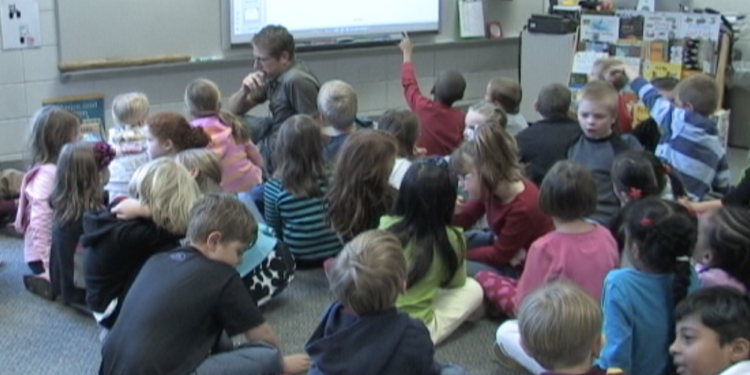About
What we do
Cognitively Guided Instruction (CGI) is a professional development research base that explores the teacher noticing practices of attending to children’s mathematical thinking, interpreting that thinking based on detailed developmental frameworks, and deciding how to respond instructionally based on that knowledge of the children (Jacobs et al., 2010). CGI based classrooms are language rich problem-solving environments where teachers elicit children's thinking in order to explore mathematical concepts and procedures. Based on the work of Thomas Carpenter and Elizabeth Fennema, this over 30-year research base continues to explore the knowledge of how children’s number sense develops over time. The original research explored grades K-3’s understanding of the single digit operations in addition, subtraction, multiplication and division. That expanded to multi-digit base ten development and invented strategies in the four operations (Carpenter et al., 2015), algebraic and relational thinking (Carpenter et al., 2003), and K-5 development of fraction and decimal operations (Empson & Levi, 2011). The most recent publication focuses on early childhood (Carpenter et al., 2017). The research continues through the work of such researchers as Megan Franke (UCLA), Susan Empson (Missouri), Linda Levi (CGI Math Teacher Center), Vicki Jacobs (UNC at Greensboro), Rebecca Ambrose (UC, Davis), Randy Phillipp (San Diego State), among many others of the next generation of researchers spread across the country. See the CGI bibliography for an updated list of research articles and publications.
Who we are
The first Cognitively Guided Instruction (CGI) professional development institute in Minnesota brought together twenty-two teachers in 1993. Seven of those teachers banded together to form a grassroots effort bringing CGI practices and research to colleagues in their respective buildings and districts. With support from a two-year Eisenhower Title II grant, awarded by the Minnesota Department of Education, the seven teachers both maintained their connections and also began expanding the scope of their networks. James Brickwedde became the group's lead administrator due to his background in grants management prior to having become a teacher and the willingness of the Hopkins School District to become the grant's fiscal agent.
In 2000, the group entered into a formal relationship with Hamline University's Continuing Studies Program, establishing the Project for Elementary Mathematics with Brickwedde as the program coordinator. In 2011, the Project became a private entity as it currently exists.
Colleagues at other Minnesota school sites who have worked as CGI leaders are James Brickwedde (Project for Elementary Mathematics), Margaret Williams (Anoka-Hennepin Public Schools), Michael Wallus (Math Learning Center), Christina Miller (US Math Recovery Council), Sarah Johnston & Jill Bue (Roseville Public Schools). School sites in Minnesota interested in CGI professional development support in Minnesota, contact us at [email protected]. For support nationally, contact Linda Levi at the CGI Math Teacher Learning Center: [email protected]

Sources
Carpenter, T.P., Fennema, E., Franke, M.L., Levi, L., & Empson, S.B. (2015). Children's Mathematics: Cognitively Guided Instruction, Second Edition. Portsmouth, NH: Heinemann.
Carpenter, T.P., Franke, M.L. & Levi, L. (2003). Thinking Mathematically: Integrating Arithmetic and Algebra in Elementary School. Portsmouth, NH: Heinemann.
Carpenter, T.P., Franke, M.L., Johnson, N.C., Turrou, A.C., Wager, A.A. (2017). Young Children's Mathematics: Cognitively Guided Instruction in Early Childhood. Portsmouth, NH: Heinemann.
Empson, S.B. & Levi, L. (2011). Extending Children’s Mathematics: Fractions & Decimals. Portsmouth, NH: Heinemann.
Jacobs, V.R., Lamb, L.L.C., & Phillipp, R.A. (2010). Professional noticing of children's mathematical thinking. Journal for Research in Mathematics Education, 41 (2), 169-202.